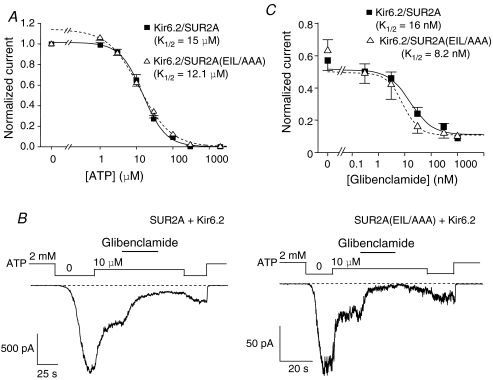Figure 5. SUR2A(EIL/AAA) channels respond like wild-type to ATP and glibenclamide.
A, ATP dose–response relationships for Kir6.2/SUR2A (▪) and Kir6.2/SUR2A(EIL/AAA) (▵). Currents were normalized to the current measured in 0 ATP. Each point represents data from 21–44 patches for Kir6.2/SUR2A and 8–28 patches for Kir6.2/SUR2A(EIL/AAA). Fitting of eqn (2) yielded K1/2 = 15 ± 0.7 μm (h = 1.39 ± 0.07) for Kir6.2/SUR2A and K1/2 = 12.1 ± 0.9 μm (h = 1.01 ± 0.05) for Kir6.2/SUR2A(EIL/AAA). B, representative currents recorded in inside-out patches from Xenopus oocytes expressing either Kir6.2/SUR2A or Kir6.2/SUR2A(EIL/AAA). Glibenclamide (300 nm) was applied in the presence of 10 μm ATP. C, glibenclamide dose–response relationships for Kir6.2/SUR2A (▪) and Kir6.2/SUR2A(EIL/AAA) (▵) in the presence of 10 μm ATP. Currents were normalized to the current measured in 0 ATP. Each point represents data from 5–12 patches for Kir6.2/SUR2A and 4–7 patches for Kir6.2/SUR2A(EIL/AAA). Fitting of eqn (2) yielded K1/2 = 16 ± 9.5 μm (h = 1.04 ± 0.6) for Kir6.2/SUR2A and K1/2 = 8.2 ± 1.4 μm (h = 1.43 ± 0.19) for Kir6.2/SUR2A(EIL/AAA).

